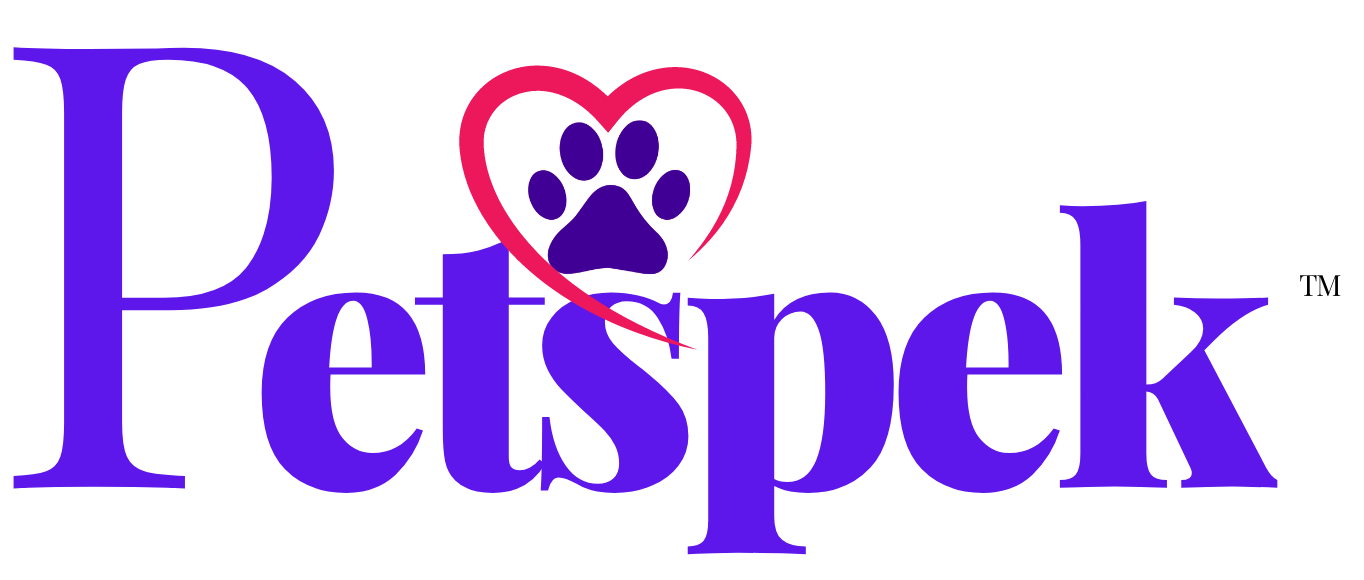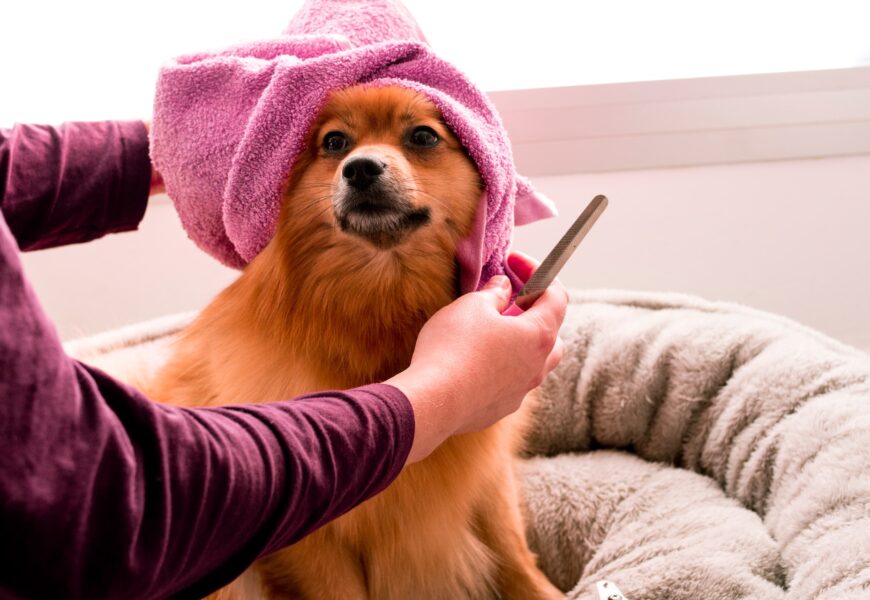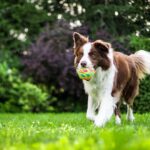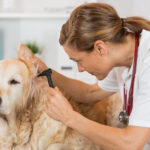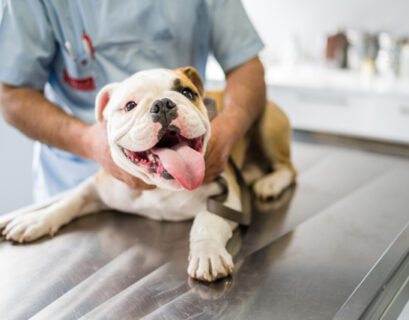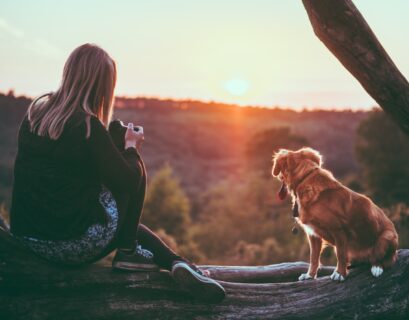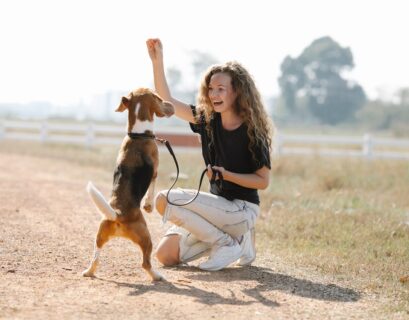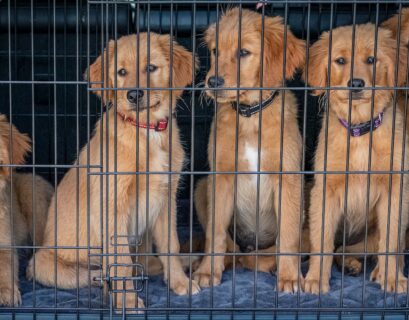“Unlock the Secret to Unleashing Your Dog’s Health and Happiness: The Ultimate Guide to Dog Grooming!”
Key Takeaways:
- Dog grooming is vital for your dog’s health and well-being.
- Regular grooming prevents skin issues, matting, and discomfort.
- Trim your dog’s nails to maintain paw health and prevent overgrowth.
- Clean your dog’s ears and eyes regularly to prevent infections.
- Dental care is crucial for your dog’s oral hygiene and overall health.
- Grooming needs vary based on breed, coat type, and lifestyle.
- Consider professional grooming for expertise and specialized tools.
- At-home grooming fosters bonding and familiarity.
- Combining both approaches can provide the best results.
- Groom your dog before and after specific activities for cleanliness and comfort.
- Address common grooming challenges like mats, shedding, and skin allergies.
- Grooming enhances the emotional bond and overall well-being of your dog.
As dog owners, we cherish the companionship and unconditional love our furry friends bring into our lives. Our loyal canines stand by us through thick and thin, wagging their tails with joy at the mere sight of us. In return, it is our responsibility to ensure their well-being and happiness, and one essential aspect of that care is dog grooming. Beyond the fluffy coats and adorable paws lie important grooming rituals that keep our dogs looking their best and contribute to their overall health and comfort.
Whether you’re a seasoned dog owner or a new puppy parent, understanding the significance of regular grooming and the various techniques to pamper your four-legged companion will deepen the bond between you and your furry family member.
After all, a happy, healthy pup is a testament to the unbreakable bond between humans and their loyal companions. Let the grooming adventure begin!
Preparing your dog for grooming sessions is creating a safe and enjoyable environment where you and your pup can feel at ease. Armed with the right grooming supplies and tools, you’ll be ready to tackle any grooming challenge with confidence and finesse.
Brushing your dog’s coat is a crucial element of grooming, but it’s not a one-size-fits-all approach. Each dog breed boasts its own unique coat type: luxurious long hair, sleek short fur, or a magnificent double coat. Understanding the nuances of different coat types is key to delivering a grooming experience that leaves your dog’s coat shining and healthy.
When bathing your dog, we’ll explore the appropriate frequency and the right products, ensuring your pup remains clean and fresh without compromising its natural skin oils. We’ll also delve into dog-specific shampoos and conditioners, understanding their purpose and how they contribute to maintaining your furry friend’s coat in prime condition.
Preparing for Dog Grooming
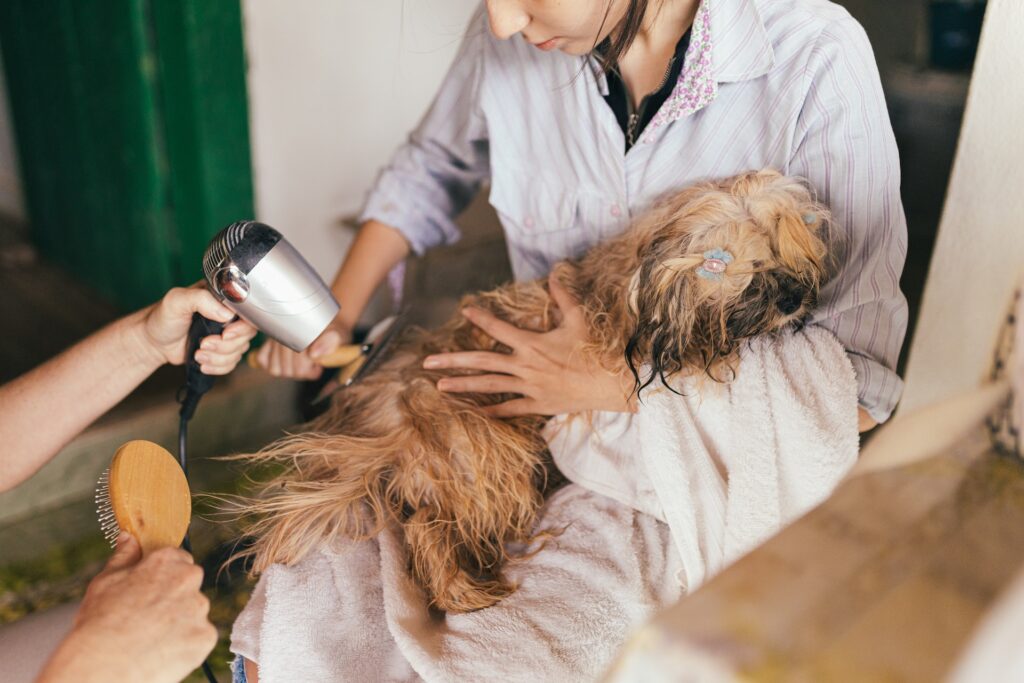
Grooming your beloved canine companion is an essential part of responsible pet ownership. Besides keeping them looking their best, regular grooming contributes to their overall health and well-being. To ensure a successful and stress-free grooming experience for both you and your dog, it’s crucial to start with proper preparation.
Before you embark on your grooming adventure, it’s essential to set the stage for success by creating a safe and comfortable grooming environment. Find a quiet and well-lit area in your home where you can groom your dog without distractions. A non-slip surface, such as a rubber mat, is essential to prevent accidents during bathing. Consider using a grooming table if your dog is comfortable with it, as it can save your back and make the grooming process easier.
Create a positive and relaxing atmosphere by incorporating calming elements like soothing music or aromatherapy diffusers. Introduce your dog to the grooming area gradually, offering treats and praise to associate the space with positivity. Make sure the room is well-ventilated, especially during bathing, to keep your dog cool and comfortable.
To embark on a successful grooming journey, you’ll need a set of essential grooming supplies and tools. Invest in high-quality brushes and combs suitable for your dog’s coat type. For long-haired breeds, a slicker brush and a wide-toothed comb are ideal for detangling and removing loose hair. Short-haired dogs may benefit from a rubber grooming mitt or a bristle brush to keep their coats shiny and smooth.
Don’t forget nail clippers or a grinder to maintain your dog’s paw health. Look for clippers with safety features to prevent over-cutting. Additionally, you’ll need cotton balls or pads for ear cleaning, a dog-friendly toothbrush and toothpaste for dental care, and tear stain removers for light-colored breeds.
Introducing your dog to the grooming process early in life is essential for building a positive association with grooming. If you have a puppy, start with short and gentle grooming sessions to accustom them to the sensations and handling involved. Always offer treats and praise during and after grooming to reinforce positive behavior.
For older dogs or those who may be anxious about grooming, take it slow and be patient. Gradually introduce them to grooming tools, allowing them to sniff and explore before touching them. Offer treats and encouragement to create a positive experience. If your dog is exceptionally anxious, consider seeking the help of a professional dog trainer or behaviorist to build their confidence.
By creating a safe and calming environment, equipping yourself with the right tools, and familiarizing your dog with the grooming process, you’re laying the groundwork for a successful grooming routine that will benefit both you and your four-legged friend.
Coat Care and Grooming Techniques
A dog’s coat is their crowning glory, and regular brushing is essential for maintaining its health and appearance. However, different coat types require different brushing techniques. For long-haired breeds, daily brushing is necessary to prevent mats and tangles, while short-haired dogs benefit from weekly brushing to remove loose hairs and dirt.
When brushing, always start at the top and work your way down, gently removing any knots with a slicker brush or comb. Be patient and avoid pulling on the hair, as it may cause discomfort and lead to grooming aversion. Consider using a de-shedding tool for breeds that shed excessively, helping to reduce the amount of loose fur in your home.
Shedding is a natural process for most dogs, but it can be a challenge for pet owners, especially during shedding seasons. To manage shedding, incorporate regular brushing sessions into your grooming routine. This not only helps remove loose hair but also distributes natural oils, keeping the coat healthy and shiny.
In addition to brushing, consider adding a nutritional supplement or adjusting your dog’s diet to support healthy skin and coat. Consult your veterinarian for recommendations specific to your dog’s needs. Keeping your home clean and using lint rollers or pet hair removers can also help minimize the impact of shedding on your furniture and clothing.
Bathing your dog is an essential part of grooming, but the frequency depends on their lifestyle, coat type, and skin condition. Generally, most dogs benefit from bathing every four to eight weeks, but over-bathing can strip their skin of essential oils, leading to dryness and irritation.
Use a dog-specific shampoo that matches your pup’s coat and skin needs. For dogs with sensitive skin or allergies, opt for hypoallergenic formulas. Avoid using human shampoos, as they may contain harsh chemicals that can harm your dog’s skin. Always rinse thoroughly to remove all shampoo residues.
Dog-specific shampoos and conditioners are formulated to cater to the unique needs of canine coats and skin. They come in various types, such as moisturizing, deodorizing, or flea and tick control shampoos. Understanding their purposes and selecting the right products for your dog can make a significant difference in the grooming process.
Moisturizing shampoos are excellent for dogs with dry skin, as they help nourish and hydrate the coat. Deodorizing shampoos can be useful for dogs with strong odors, while flea and tick control shampoos provide an extra layer of protection against pesky parasites. Always read the product labels and consult your veterinarian if you’re unsure which shampoo and conditioner combination best suits your dog’s needs.
Nail Care and Paw Health
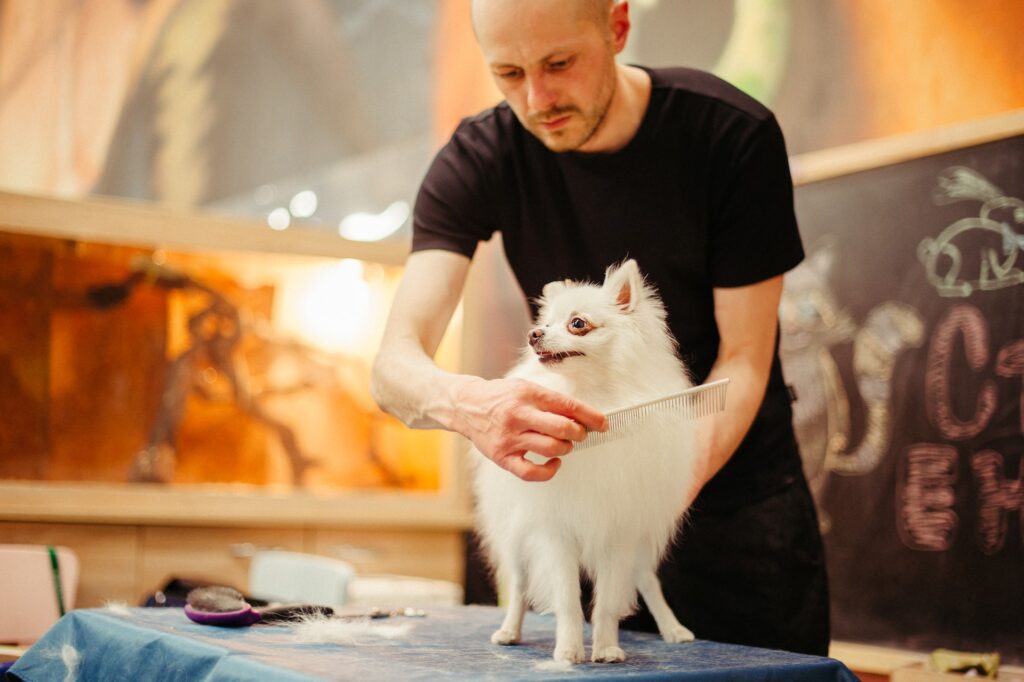
Our canine companions lead active lives, and their paws bear the brunt of all their adventures. Ensuring proper nail care and paw health is essential for their comfort and overall well-being. In this section, we’ll delve into the importance of regular nail trimming, provide a step-by-step guide for safe trimming, explore ways to prevent overgrowth and nail-related issues, and reveal the secrets to moisturizing and protecting your dog’s paws.
Regular nail trimming is vital for your dog’s comfort and mobility. Overgrown nails can cause discomfort, lead to joint and posture problems, and even impact their ability to walk properly. Untrimmed nails can also become prone to splitting or breaking, which can be painful for your furry friend.
Keeping your dog’s nails at an appropriate length helps them maintain proper paw alignment and distribute their weight evenly. It’s an essential aspect of preventive care, ensuring that they can walk, run, and play without discomfort or difficulty
Trimming your dog’s nails may seem daunting at first, but with a gentle approach and proper technique, it can become a stress-free process for both you and your pup. Follow these steps for safe nail trimming:
- Gather the Right Tools: Use dog-specific nail clippers or grinders. Have styptic powder or cornstarch on hand in case of accidental nail bleeding.
- Introduce the Tools: Familiarize your dog with the clippers or grinder before starting. Let them sniff and explore the tools to reduce anxiety.
- Find the Quick: The quick is the pinkish part of the nail that contains blood vessels and nerves. Avoid cutting into the quick to prevent pain and bleeding.
- Trim Gradually: Cut small portions of the nail at a time. If your dog has clear nails, you can see the quick; for dark nails, trim conservatively or use the grinder to avoid accidental cutting.
- Stay Calm: Remain calm and patient during the process. If your dog becomes anxious, take a break and try again later.
- Reward and Praise: Offer treats and praise after each successful trimming session to create positive associations with nail care.
To prevent overgrown nails and related issues, make nail trimming a regular part of your grooming routine. Aim to trim your dog’s nails every 2-4 weeks, but the frequency may vary based on their activity level and how much they wear down naturally.
Regular walks on hard surfaces like sidewalks can help naturally file down your dog’s nails, reducing the need for frequent trimming. Additionally, providing appropriate chew toys can help keep their nails worn down and prevent excessive growth
Your dog’s paw pads are sensitive and can be susceptible to dryness and cracking. Moisturizing your dog’s paw pads with pet-safe balms or creams can help keep them soft and protected from harsh elements like hot pavements or icy surfaces.
During the winter months, use pet-safe paw wax to prevent ice and snow from sticking to their paws and causing discomfort. In the summer, protect their paws from hot surfaces by walking them during cooler times of the day or using protective booties.
Remember to inspect your dog’s paws regularly for any signs of cuts, abrasions, or foreign objects, especially after outdoor adventures. Keep their paws clean by wiping them with a damp cloth after walks to remove dirt and debris.
By taking the time to care for your dog’s nails and paws properly, you ensure they can enjoy every adventure to the fullest, free from discomfort and paw-related issues.
Ear and Eye Hygiene
Your dog’s ears are sensitive and require regular cleaning to prevent ear infections and discomfort. However, cleaning their ears requires gentle handling to avoid injury and damage.
To clean your dog’s ears:
- Inspect Regularly: Check your dog’s ears weekly for signs of redness, swelling, or excessive wax buildup.
- Use Pet-Safe Solutions: Use a vet-approved ear cleaning solution and apply it on a cotton ball or pad to wipe the outer ear canal gently.
- Avoid Q-Tips: Never use cotton swabs or Q-tips to clean the inner ear, as they can push debris further and cause injury.
- Watch for Signs: If your dog shows signs of ear pain, scratching, or shaking their head excessively, consult your veterinarian to rule out any ear infections or other issues.
Ear infections can be painful and irritating for dogs. Common signs include excessive scratching, head shaking, redness, odor, and discharge. If you notice any of these signs, it’s essential to seek veterinary care promptly.
Your veterinarian will perform a thorough examination and may take a sample from the ear to determine the cause of the infection. They will then prescribe appropriate medication, which may include ear drops or antibiotics, to treat the infection effectively.
Your dog’s eyes are windows to their soul, and keeping them clean and tear-stain free is essential for their overall health and appearance.
To maintain your dog’s eye hygiene:
- Regularly Clean Around the Eyes: Use a damp, soft cloth to clean any tear stains or discharge around your dog’s eyes.
- Trim Eye Hair: For breeds with long facial hair, keep the hair around the eyes trimmed to prevent it from irritating their eyes and causing tear stains.
- Watch for Abnormalities: Monitor your dog for signs of eye redness, excessive tearing, or squinting, which may indicate eye issues. If you notice any abnormalities, seek veterinary attention.
By incorporating ear and eye hygiene into your regular grooming routine, you’ll ensure your dog’s sensory organs stay clean, healthy, and free from discomfort or infections.
Oral Hygiene and Dental Care
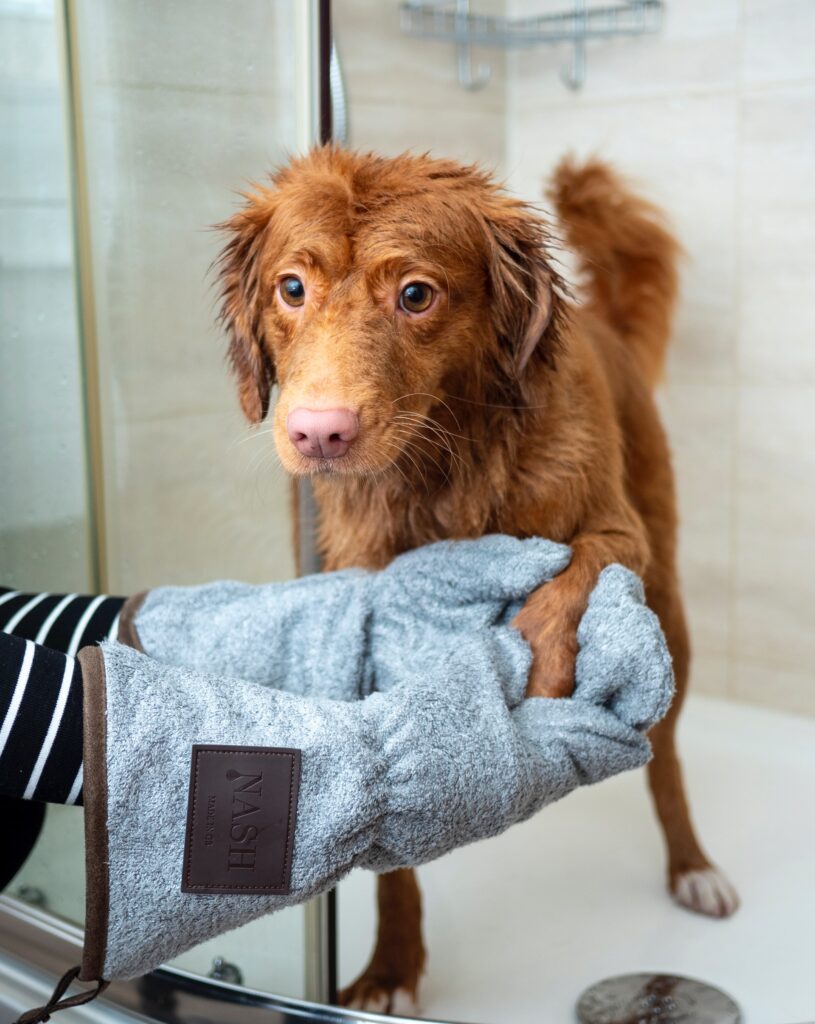
Just like humans, dogs benefit from proper dental care to maintain healthy gums and teeth. Dental health is crucial,us special breeds and coat types.
Long-haired breeds like the Shih Tzu, Maltese, and Afghan Hound require regular and careful grooming to keep their coats in top condition.
For long-haired breeds:
- Daily Brushing: Brush their coats daily to prevent matting and tangles.
- Professional Grooming: Consider professional grooming every 4-6 weeks to maintain their coats’ shape and length.
- Face Grooming: Pay special attention to grooming the hair around their face, keeping it clean and free from tear stains.
Short-haired breeds like the Beagle and Boxer require less grooming, but a few essential steps will keep their coats looking sleek and shiny.
For short-haired breeds:
- Weekly Brushing: Brush their coat weekly to remove loose hair and dirt.
- Bathing as Needed: Bathe them as needed, typically every 6-8 weeks, or when they get dirty.
- Skin Health: Pay attention to their skin health, as short coats can sometimes hide skin issues.
Double-coated breeds, such as the Siberian Husky and German Shepherd, have a thick undercoat that sheds heavily during certain seasons.
For double-coated breeds:
- Seasonal Shedding: Be prepared for heavy shedding during spring and fall, known as “blowing their coat.”
- Regular Brushing: Increase brushing during shedding seasons to remove loose fur and prevent matting.
- Cooling Techniques: Use cooling tools like undercoat rakes to keep them comfortable during warmer months.
Dogs with special needs, such as seniors, puppies, and anxious dogs, require gentle and considerate grooming techniques.
For dogs with special needs:
- Senior Dogs: Be gentle with grooming, considering their age-related sensitivities.
- Puppies: Gradually introduce grooming and make it a positive experience.
- Anxious Dogs: Use calming techniques and seek professional help if grooming is exceptionally stressful for your dog.
By understanding and tailoring your grooming approach to the specific needs of your dog’s breed and coat type, you’ll ensure they receive the best care possible.
Ear and Eye Hygiene
Proper ear hygiene is crucial to prevent ear infections and discomfort in your furry companion. Follow these do’s and don’ts when cleaning your dog’s ears:
Do’s:
- Use Pet-Safe Ear Cleaning Solutions: Opt for vet-approved ear cleaning solutions that are gentle on your dog’s ears.
- Use a Soft Cloth or Cotton Ball: Wet a soft cloth or cotton ball with the cleaning solution to wipe the outer ear canal gently.
- Observe Regular Cleaning: Perform ear cleaning at least once a week, or more frequently if your dog is prone to ear issues.
- Monitor for Red Flags: Keep an eye out for signs of ear problems, such as excessive head shaking, scratching, or a foul odor.
Don’ts:
- Avoid Probing the Ear Canal: Never insert cotton swabs or Q-tips into your dog’s ear canal, as it can push debris further and cause injury.
- Don’t Use Harsh Solutions: Avoid using harsh chemicals or alcohol-based solutions, as they can irritate the delicate ear tissues.
Ear infections can be painful and distressing for your dog. Knowing the signs and addressing them promptly is crucial for their comfort. Look out for these signs of ear infections:
- Excessive Scratching: If your dog is constantly scratching or pawing at their ears, it may be a sign of an ear infection.
- Head Shaking: Frequent head shaking or tilting could indicate ear discomfort.
- Redness and Swelling: Observe your dog’s ears for redness, swelling, or discharge.
- Foul Odor: A strong or unpleasant smell coming from your dog’s ears might be a sign of infection.
If you notice any of these signs, it’s essential to consult your veterinarian promptly. They will conduct a thorough examination and, if necessary, perform tests to determine the cause of the infection. Your vet will then recommend the appropriate treatment, which may include ear drops or antibiotics.
Your dog’s eyes are not only beautiful but also crucial for their well-being. Keeping their eyes clean and tear-stain free contributes to their comfort and prevents potential eye issues. Here’s how you can care for your dog’s eyes:
Do’s:
- Regular Eye Cleaning: Use a damp, soft cloth to wipe away any tear stains or discharge around your dog’s eyes regularly.
- Trim Facial Hair: For breeds with long facial hair, keep the hair around the eyes trimmed to prevent irritation.
- Observe Eye Health: Monitor your dog for signs of redness, excessive tearing, or squinting, as these might indicate eye problems.
Don’ts:
- Avoid Harsh Wipes: Refrain from using harsh wipes or products around your dog’s eyes, as they can cause irritation.
- Do Not Ignore Eye Issues: If you notice persistent eye problems, seek veterinary attention to prevent complications.
By incorporating proper ear and eye hygiene into your regular grooming routine, you’ll help maintain your dog’s sensory health and comfort, ensuring they can see the world with clear eyes and hear it with keen ears.
Grooming Special Breeds and Coat-Specific Tip
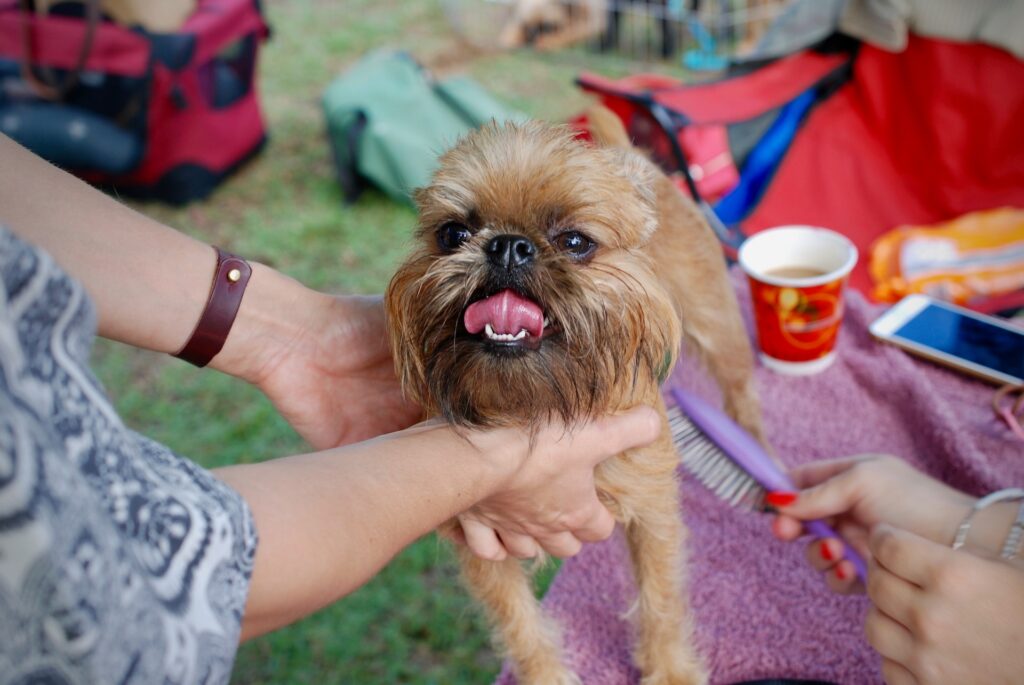
Long-haired breeds, such as the Shih Tzu, Maltese, and Afghan Hound, have exquisite coats that require regular and careful grooming to keep them in top condition.
Do’s:
Daily Brushing: Long-haired breeds require daily brushing to prevent matting and tangles.
Don’ts:
Avoid Skipping Grooming Sessions: Neglecting grooming can lead to painful matting and discomfort for your dog.
Short-haired breeds like the Beagle and Boxer may require less grooming, but a few essential steps will keep their coats looking sleek and shiny.
Do’s:
Weekly Brushing: While short-haired breeds require less brushing, a weekly brushing session helps remove loose hair and dirt.
Double-coated breeds, such as the Siberian Husky and German Shepherd, have a thick undercoat that sheds heavily during certain seasons.
Do’s:
Seasonal Shedding: Be prepared for heavy shedding during spring and fall, commonly known as “blowing their coat.”
Don’ts:
Avoid Shaving Their Coats: Shaving double-coated breeds can interfere with their natural insulation and may lead to skin issues.
Dogs with special needs, such as seniors, puppies, and anxious dogs, require gentle and considerate grooming techniques.
Do’s:
Be Gentle and Patient: Treat senior dogs and puppies with extra care during grooming sessions.
Don’ts:
Avoid Rushing: Take your time and never rush grooming sessions with anxious dogs.
By understanding and tailoring your grooming approach to the specific needs of your dog’s breed and coat type, you’ll ensure they receive the best care possible, and they’ll look their best while feeling comfortable and content.
Long-haired breeds, such as the Shih Tzu, Maltese, and Afghan Hound, have exquisite coats that require regular and careful grooming to keep them in top condition.
Do’s:
- Daily Brushing: Long-haired breeds require daily brushing to prevent matting and tangles. Use a slicker brush or wide-toothed comb to remove knots gently.
- Professional Grooming: Consider professional grooming every 4-6 weeks to maintain their coats’ shape and length. Professional groomers can skillfully trim and style long-haired coats to showcase their beauty.
Don’ts:
- Avoid Skipping Grooming Sessions: Neglecting grooming can lead to painful matting and discomfort for your dog. Regular grooming keeps their coat healthy and free from knots.
Short-haired breeds like the Beagle and Boxer may require less grooming, but a few essential steps will keep their coats looking sleek and shiny.
Do’s
- Weekly Brushing: While short-haired breeds require less brushing, a weekly brushing session helps remove loose hair and dirt. Use a rubber grooming mitt or bristle brush to keep their coats smooth and glossy.
- Regular Baths: Bathe short-haired dogs every 6-8 weeks or as needed. Use a dog-specific shampoo to maintain their coat’s natural oils and keep their skin healthy.
Double-coated breeds, such as the Siberian Husky and German Shepherd, have a thick undercoat that sheds heavily during certain seasons.
Do’s:
- Seasonal Shedding: Be prepared for heavy shedding during spring and fall, commonly known as “blowing their coat.” Increase grooming sessions during shedding seasons to remove loose fur and prevent mats.
- Undercoat Rake: Invest in an undercoat rake to help remove the dense undercoat more effectively. Regular use of this tool can significantly reduce shedding.
- Don’ts:
Professional Grooming vs. At-Home Grooming
As responsible pet owners, we want the best for our furry companions, and grooming plays a crucial role in their overall well-being. When it comes to grooming, pet owners have the option of professional grooming services or at-home care. In this section, we’ll explore the pros and cons of both approaches, highlighting the bonding aspect of at-home grooming and the potential benefits of combining professional and at-home grooming for the best results.
Pros: Expertise and Experience: Professional groomers have the training and experience to handle various breeds and coat types. They can identify specific grooming needs and cater to individual requirements.
Specialized Tools and Equipment: Professional grooming salons are equipped with specialized tools and equipment, ensuring a thorough and efficient grooming process.
Time-saving: Professional grooming saves time, especially for owners with busy schedules. It eliminates the need for pet owners to manage the grooming process themselves.
Cons:Cost: Professional grooming services can be expensive, particularly for frequent grooming sessions.
Stress for Anxious Dogs: Some dogs may feel stressed or anxious in unfamiliar surroundings or with unfamiliar people.
Scheduling: Booking appointments with professional groomers may require flexibility to fit into their availability.
Pros:
- Bonding Opportunity: At-home grooming provides a bonding opportunity for pet owners and their dogs. The grooming process strengthens the human-animal bond and fosters trust.
- Familiar Environment: Grooming at home allows dogs to be in a familiar environment, which can be less stressful for them.
- Flexibility: At-home grooming allows pet owners to groom their dogs at their convenience, adapting the grooming routine to their schedule.
Cons:
- Skill Development: Grooming at home requires learning proper techniques and may be challenging for first-time pet owners.
- Time-consuming: At-home grooming can be time-consuming, especially for dogs with thick or long coats that require frequent grooming.
Combining professional grooming and at-home care can be a winning strategy for maintaining your dog’s grooming needs.
Tips for Combining Grooming Approaches:
Regular Professional Grooming: Schedule regular appointments with a professional groomer for expert grooming and coat maintenance.
At-Home Maintenance: Between professional sessions, perform at-home grooming tasks such as brushing, ear cleaning, and teeth brushing to keep your dog’s coat and hygiene in top shape.
Bonding Time: Utilize at-home grooming as a bonding experience, making it a positive and enjoyable time for both you and your dog.
Grooming Tips for Specific Dog Activities
Before:
Check for Ticks and Parasites: Before heading outdoors, check your dog for ticks and parasites. Use preventive products to protect them from infestations.
Trim Nails: Trim your dog’s nails to prevent them from getting caught or damaged during outdoor activities.
After:
Clean Paws: After outdoor adventures, clean your dog’s paws to remove dirt and debris.
Inspect for Cuts and Scratches: Check your dog’s body for cuts or scratches that may need attention.
Before the Show:
Coat Preparation: Ensure your dog’s coat is clean and well-groomed before the event.
Trimming: Perform necessary trims or cuts to enhance your dog’s breed-specific appearance.
During the Show:
Final Touch-ups: Bring grooming tools for last-minute touch-ups before entering the ring.
Keep Calm: Remain calm and composed to minimize your dog’s stress during the show.
C. Post-Grooming Care for Active Working Dogs
Post-Activity:
Cooling Down: After working or exercising, allow your dog to cool down gradually.
Hydration: Provide fresh water to keep your dog hydrated.
Grooming Essentials – Must-Have Products and Tools
To ensure effective grooming, having the right products and tools is essential. In this section, we’ll explore the must-have grooming items that every dog owner should consider having at their disposal.
1. Dog-Specific Shampoo and Conditioner:
Invest in high-quality dog-specific shampoo and conditioner suited to your dog’s coat type. Avoid using human products, as they may contain ingredients that can irritate your dog’s skin.
2. Grooming Brushes and Combs:
Different coat types require different grooming brushes and combs. Purchase brushes and combs designed for your dog’s coat length and texture. Slicker brushes are ideal for removing tangles, while bristle brushes work well for short coats.
3. Nail Clippers or Grinders:
Regular nail trimming is vital for your dog’s paw health. Choose nail clippers or grinders that are comfortable to use and suitable for your dog’s nail size.
4. Ear Cleaner and Cotton Balls:
Keep your dog’s ears clean and free from debris by using a dog-specific ear cleaner and soft cotton balls. Avoid using cotton swabs, as they can cause damage to the ear canal.
5. Dog Toothbrush and Toothpaste:
Maintain your dog’s dental health with a dog-specific toothbrush and toothpaste. Regular teeth brushing helps prevent dental issues and bad breath.
6. Shedding Tools:
For breeds prone to shedding, invest in deshedding tools such as undercoat rakes or shedding blades. These tools help remove loose fur and minimize shedding around the house.
Grooming Safety – Tips for a Stress-Free Experience
Grooming should be a positive and stress-free experience for both you and your dog. To ensure safety and comfort during grooming sessions, follow these tips:
1. Introduce Grooming Gradually:
For puppies or dogs new to grooming, introduce the process slowly and gently. Make it a positive experience by offering treats and praise.
2. Be Patient and Calm:
Stay calm and patient throughout the grooming session. Dogs can sense your emotions, and remaining composed helps ease their anxiety.
3. Use Positive Reinforcement:
Reward your dog with treats or verbal praise during and after grooming. Positive reinforcement reinforces good behavior and helps build a positive association with grooming.
4. Watch for Signs of Discomfort:
Monitor your dog for signs of discomfort or distress, such as excessive panting, whining, or trying to escape. If your dog seems stressed, take a break and resume later.
5. Take Breaks if Necessary:
Long grooming sessions can be tiring for your dog. Take breaks when needed to allow them to rest and relax.
6. Be Mindful of Sensitive Areas:
Gently groom sensitive areas such as the face, ears, and paws. Approach these areas with care and patience.
Conclusion
Dog grooming plays a pivotal role in ensuring our beloved canine companions lead healthy, happy lives. By maintaining their coat, nails, and overall hygiene, we provide them with more than just a neat appearance. Grooming is an expression of our love and care, fostering a strong bond between us and our furry friends. Whether we opt for professional grooming services or choose to groom them at home, the process becomes an opportunity for connection and trust-building.
Regular grooming not only prevents skin issues, matting, and discomfort but also allows us to detect potential health problems early on. From brushing their coats to trimming their nails and cleaning their ears and eyes, these grooming rituals contribute to our dogs’ emotional well-being as much as their physical health. By incorporating grooming into their routine, we prioritize their overall health and happiness.
As pet owners, we must be mindful of our dogs’ unique grooming needs, tailored to their specific breed, coat type, and lifestyle. Gentle handling, patience, and positive reinforcement create a calm and stress-free grooming experience for them. We should always observe their reactions, ensuring they feel safe and comfortable throughout the process.
Grooming is more than just keeping your dog looking great; it is an essential aspect of their overall health and well-being. Regular grooming helps prevent skin issues, keeps your dog comfortable, and strengthens your bond with them.
